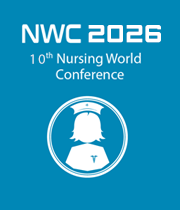Patient Screening And Care
Patient screening is critical and cannot be stressed. In its most basic form, it is inquiring about patients' symptoms before to seeing them in a therapeutic environment. You can accomplish this by having the patient fill out a form or interviewing them in person or over the phone. When done correctly, patient screening has the potential to lower hospital readmission rates. After implementing patient screening with chronic obstructive pulmonary disease (COPD) and congestive heart failure (CHF) patients, one hospital discovered that the 30-day readmission rate reduced to 2.34 percent. This is a considerable increase when compared to the national average of 10 to 20% for COPD patients and just under 10% for CHF patients. Patient screening is also important for delivering treatment in general, whether it is routine or not. To treat their patients successfully, healthcare practitioners must understand the symptoms they are experiencing as well as their general medical history. When patients arrive at a healthcare centre, paper and ink forms are commonly employed. Patients may be asked to circle locations on a graphic to show where they are in pain, check boxes that identify their symptoms, and provide their medical history. While paper forms allow patients to describe their symptoms in their own words, they can also lead to mistakes. The patient's handwriting, for example, may be unreadable, or the staff member putting the information into the clinic's electronic medical record (EMR) system may miskey the information. Prior to the pandemic, several healthcare professionals began implementing electronic check-in methods.



Title : The power of presence: Investing in LVNs for lasting impact
Emma Gitomer, Houston Methodist Hospital, United States
Title : Reaching our residents: An interdisciplinary approach to educating our future providers in the art of telephone triage
Cori Brown, Childrens Hospital of Philadelphia, United States
Title : Turn the heat around: Quality improvement in malignant hyperthermia response through in-situ simulation
Ayumi S Fielden, Houston Methodist Hospital, United States
Title : PTSD and tools for nursing resilience
Renee Bauer, Indiana State University, United States
Title : Birth partnerships: Enhancing nursing care with doula support
Vera Kevic, Doulas on Bikes, Canada
Title : Shift strong: A proactive stress-physiology framework for early identification of nurse distress
Laura Hall, Colorado Mesa University, United States